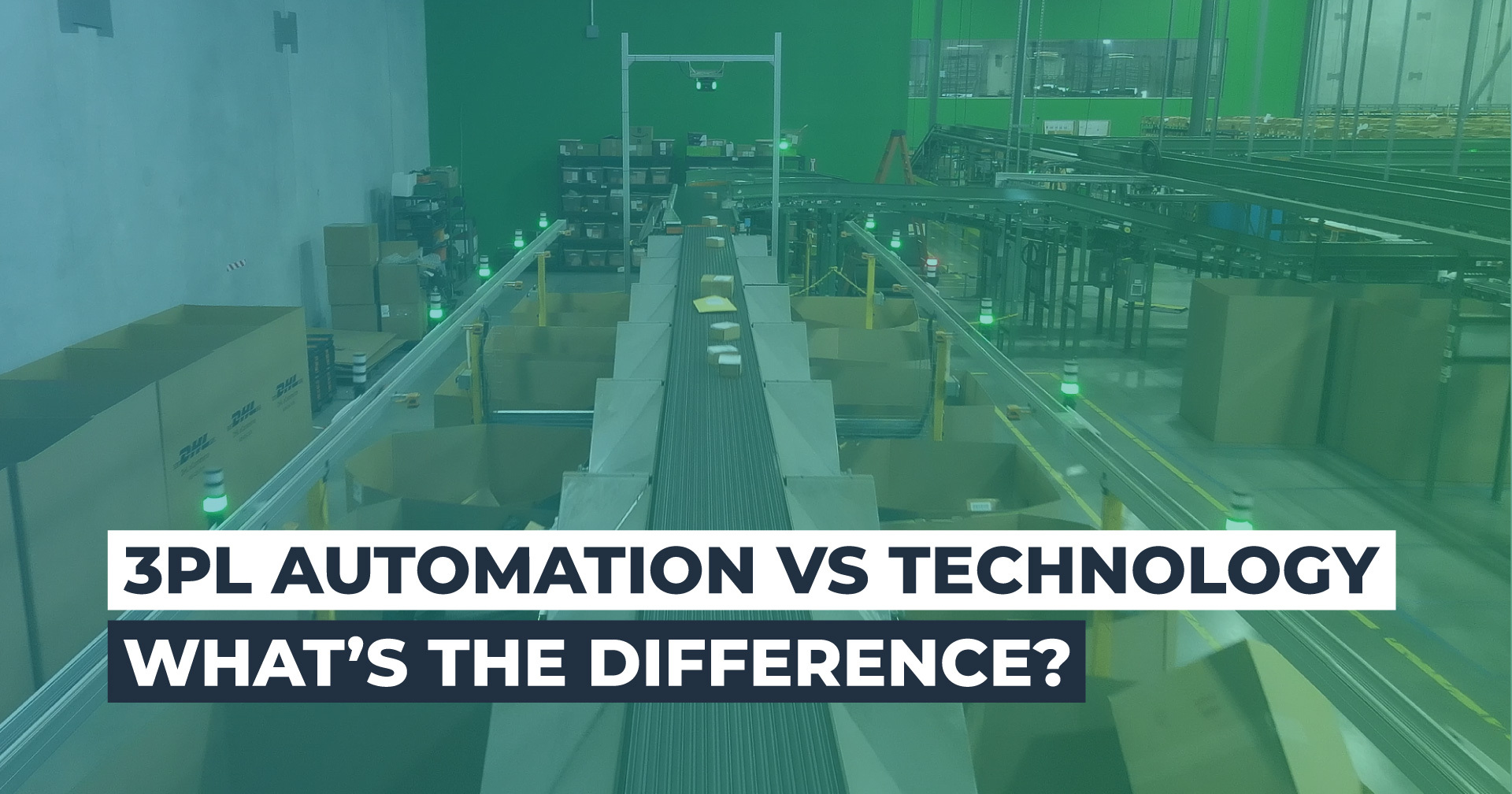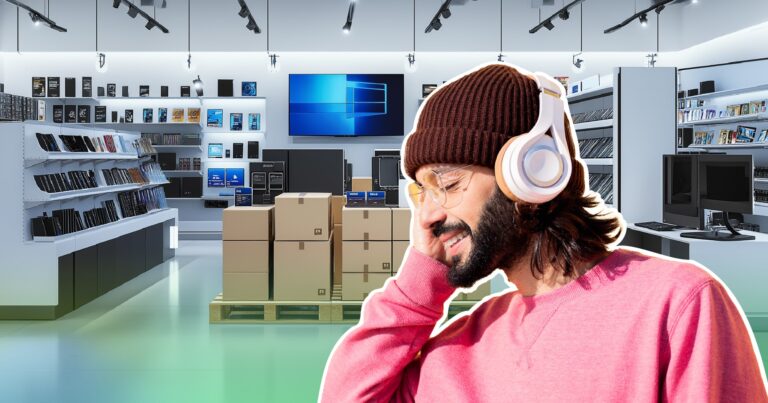3PL Automation vs Technology: What’s the Difference?
It’s easy to see why warehouse automation gets a lot of attention. There are cool robots, packages zooming through a matrix of conveyors, lights flashing everywhere — all the bells and whistles that fulfillment centers love to show off. ShipMonk is no exception. Any technology that helps our ecommerce clients grow faster and become more efficient is worth the investment. But automation is just one piece of the puzzle.
The technology that you don’t see is the warehouse management system running behind the scenes, syncing orders from multiple sales channels, prioritizing and routing pick-and-pack operations, tracking inventory and performance, and gathering useful data for reporting and decision making. Without a robust software platform that integrates dozens of diverse technologies, tools and apps, flashy robots can only do so much. Let’s look at the differences between automation and technology in a world-class 3PL fulfillment center and the distinct purposes they serve.
Key Takeaways
- Automation increases efficiency and enables businesses to scale, but without robust technologies behind the scenes to manage the process, automation can only do so much.
- The purpose of 3PL fulfillment technology is not to replace humans, but to enable humans (inventory managers, operations and customer experience teams) to do their jobs more easily and accurately).
3PL Fulfillment Automation
When we talk about 3PL warehouse automation, we’re referring to technologies (electronic or mechanical) that have been applied to accomplish a physical task or process without much human input. Automation is visible because it often has a physical component: merchandise is properly stored, orders are accurately packed and shipped, and the fulfillment process flows smoothly because bottlenecks are removed.
Examples of Warehouse Automation Include:
- Automated storage and retrieval systems (AS/RS): Automated systems that store and retrieve products from high-density storage.
- Conveyor systems: Automated systems that transport orders and/or merchandise from one area of a warehouse to another.
- Robotics: Automated machines that can perform tasks such as picking, packing, assembling cases, and replenishing supplies.
- Scanning systems: Includes machines that automatically weigh, measure, and photograph merchandise as it arrives in the warehouse, and barcode scanners that track merchandise and orders throughout the warehouse and fulfillment process.
- Automated slotting: A digital system that takes each SKU’s size, weight, and order volume into account and automatically assigns it to the optimal storage location within a warehouse.
Key Benefits of Automation:
- Increased productivity: Faster order processing times and higher throughput.
- Improved accuracy: Decreases human error on tasks like restocking and picking.
- Ability to scale: Enables merchants to grow quickly without dramatically increasing fulfillment costs.
- Optimized warehouse space: Streamlines order processing, increases storage capacity, and enables transparent, accurate billing for merchants.
- Reduced labor costs: Reduces manual labor required to perform repetitive tasks.
- Enhanced safety: Reduces the risk of workplace injuries due to repetitive motion or heavy loads.
“There are a lot of benefits to automation, but it needs to have a clear payback period,” explains Kevin Sides, President of ShipMonk. “We don’t just invest in automation at any cost. It has to net efficient and scalable solutions to be sustainable.”
3PL Fulfillment Technology
When we talk about fulfillment technology, we’re usually referring to what happens behind the scenes — the warehouse management system (WMS) that seamlessly integrates with shopping carts, payment systems and dozens of other apps, tools, and technologies to manage the entire fulfillment process. The purpose of 3PL fulfillment technology is not to replace humans, but to enable humans (inventory managers, operations and customer experience teams) to do their jobs more easily and accurately.
Examples of Fulfillment Technology Include:
- Warehouse Management Systems (WMS): Software that manages inventory, order fulfillment, and warehouse operations.
- Transportation Management Systems (TMS): Software that optimizes transportation routes, carrier selection, and freight costs.
- Retail and Wholesale Integrations: EDI-compliant technology that empowers growing brands to quickly master the complex challenges of B2B fulfillment.
- Customer Relationship Management (CRM): WMS software that integrates with CRM systems to more easily manage customer interactions and data.
- Return authorization systems: Digital systems that automatically approve and initiate merchandise returns when manual approval is not indicated.
- Automated payment systems: Digital systems that automatically process payments and refunds when predetermined criteria are met.
- Virtual Carrier Network (VCN): An advanced transportation management system that enables ShipMonk clients to leverage our buying power and effortless shipping mapping software.
- Data Analytics Tools: Tools that analyze data to identify trends, optimize processes, and make informed decisions.
Key Benefits of Fulfillment Technology:
- Seamless integrations: Faster, less stressful onboarding and more reliable data transmission.
- Improved visibility and control: Track and manage inventory, order status, and shipments in real-time.
- Centralized data: Sync order and inventory data from multiple sales channels onto one intuitive platform.
- Better decision-making: Gain data-driven insights for strategic planning.
- Ability to scale: Add sales volume, new sales channels, retail/wholesale distribution, or go international without switching or adding fulfillment partners.
- Enhanced customer service: Reduce need for customer service due to improved order accuracy and faster delivery times, and more quickly resolve any problems that do arise.
While 3PL automation and technology clearly serve distinct purposes, they often work together. For example, a WMS might direct an AS/RS to retrieve a specific product for a customer order, or it might automatically notify a merchant to reorder inventory when stock falls to a certain level.
Automation is the Tip of the Iceberg
In essence, automation executes physical tasks more efficiently, while WMS technology provides the robust tools and information to manage the entire fulfillment process. A growing online business needs both, but ultimately, no one cares about technology if a fulfillment company can’t get orders out on time, accurately, and for a good price. If the technology isn’t helping achieve those goals, it’s not worth the investment.
For More on Warehouse Automation and WMS Technology Read:
Time-Saving Automation for Ecommerce Brands
3PL Automation – Inside Modern Fulfillment Center Machinery



